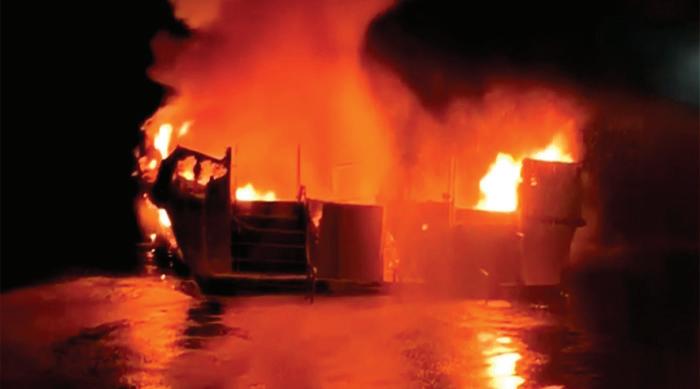SAFETY FIRST
Management of Change: Key to Safety Success A Need for Change
E
very organization must deal with change—it is how you manage it that determines success. To be successful, changes should be managed in a way that ensures the safety and sustainability of the people, equipment, and environment that may be impacted by the change are accounted for. In a well-organized safety management system, processes are controlled and audited using risk management tools to measure the effectiveness of the organization’s systems and activities. If there is an opportunity to improve processes, it is the operations team’s duty to initiate a review of the proposed change to determine if it will be advantageous; if the change will benefit the operation, the safety professional or risk manager must then ensure the process of change is undertaken in a systematic way that mitigates risks.
Management of Change This process is what we call Management of Change (MoC), and there are many ways a business may approach it. There are peer-rev iewed papers, standards, worksheets, and other resources that will purport to identify the most practical and effective way to embark on MoC. Perhaps that voluminous amount of information is why many managers dread the idea of using a formal MoC process. Re s e a rch i n g m e t h o d s , c re a t i n g a n action plan, monitoring the process, and 40 Marine Log // February 2022
analyzing the results can seem daunting, especially in a lean operation. This feeling is understandable—after all, if change were easy, we wouldn’t be talking about it. Howe ver, MoC is not an academic exercise—and it shouldn’t be seen as superfluous to the field managers who have to participate in it, or as something only large companies with intellectuals in leadership undertake. It is necessary for the smallest operators to compete and imperative for the largest corporations to be sure there is not a disconnect between the main office and the fleet. The risks of change can only be identified and controlled if they are examined. So how should the process of MoC begin? The first question to ask is, “Do we need this change?” Conducting an initial highlevel assessment of the benefit versus risk of change is a critical step in the process. Determining the need for change always involves meeting with different stakeholders, who can become time consuming and burdensome—but the alternative may lead to expensive mistakes and lack of full or timely implementation. After all, the goal of MoC is to identify who needs to be trained, what procedures need to be updated, the schedule within which the change should occur, and what other programs or policies will need to be examined to conform to the change. Without looking at the variables, you cannot know the risk.
Impacting Your Business Using a standard process of logical progression to identify how change can impact your organization is the best way to be sure your vision of progress is not actually itself an added and unnecessary risk. Templates can be found through an easy internet search, or in standards like ISO or OSHA regulations. By investing time at the beginning of a process you can make sure it will produce the impac t you desire, you can mitigate the chance of negative impacts, and you can identify the areas of concern before deployment. This is the cornerstone of good management and a well-run safety program.
MICHAEL BRESLIN Director – Safety and Sustainability The American Waterways Operators
Photo Credit: Shutterstock/Iam_Anuphone, AWO
Safety professionals must ensure the process of change is undertaken in a systematic way that mitigates risks.
Once the need for the change has been confirmed, the next and likely most critical step of the process is getting program buyin. Communicating the goal of the MoC to those that will be impacted by it is necessary for a successful transition. This requires good communication and trust between management and the field. The safety team’s ability to effectively communicate the benefit of the new process to the captain or manager comes from a relationship built over time. It may help with implementation to refer to the similar change processes already in place. Many of our managers and captains are already performing ty pes of documented management of change every day: the crew change checklist, pre-voyage inspection plan, shipyard checklist, and so many of the other forms and documents that maritime safety professionals are well accustomed to filling out each day are versions of MoC. The only novelty about the formal MoC process is that it is required when doing a new thing or using a significantly new machine, which also makes the inclusion of staff outside of the usual decision-making process necessary since the regular operation is changing.






